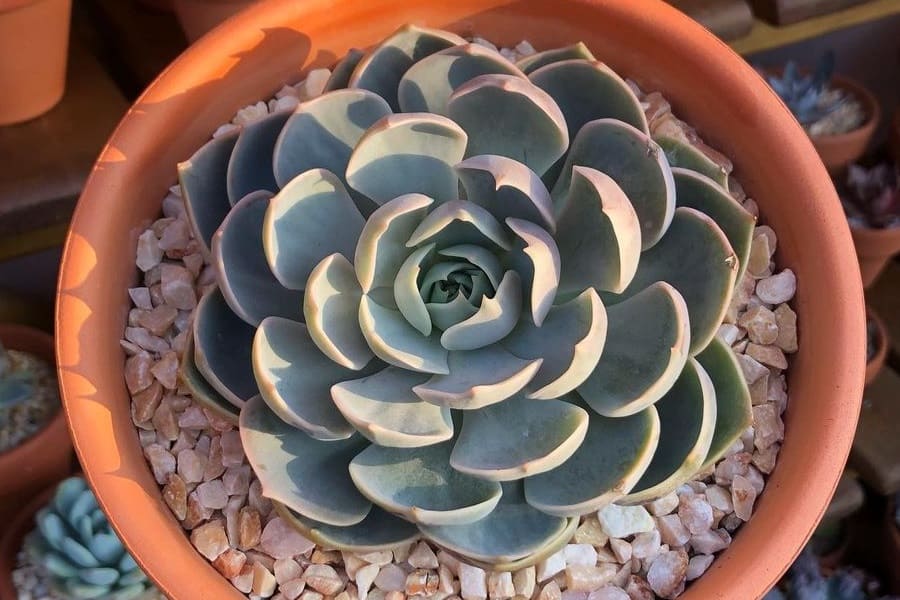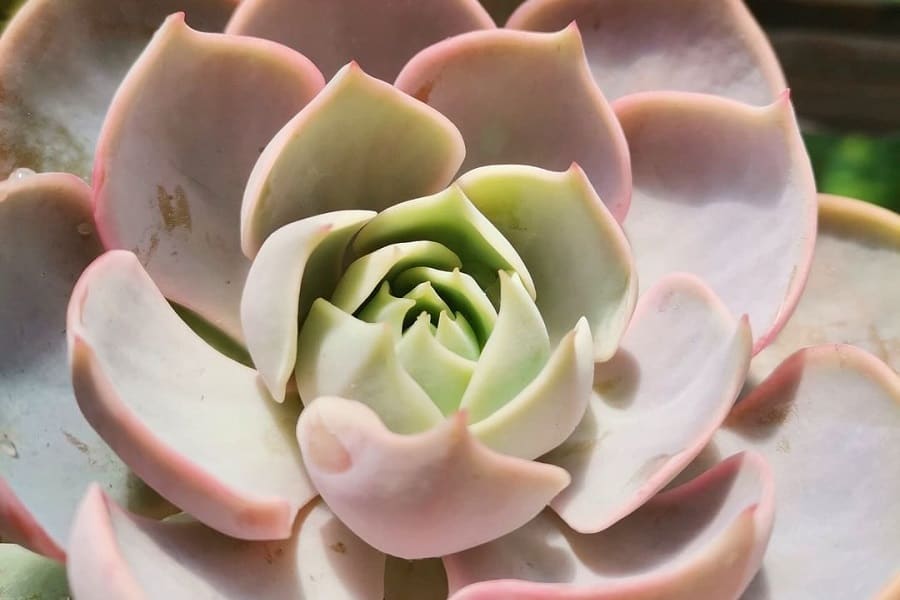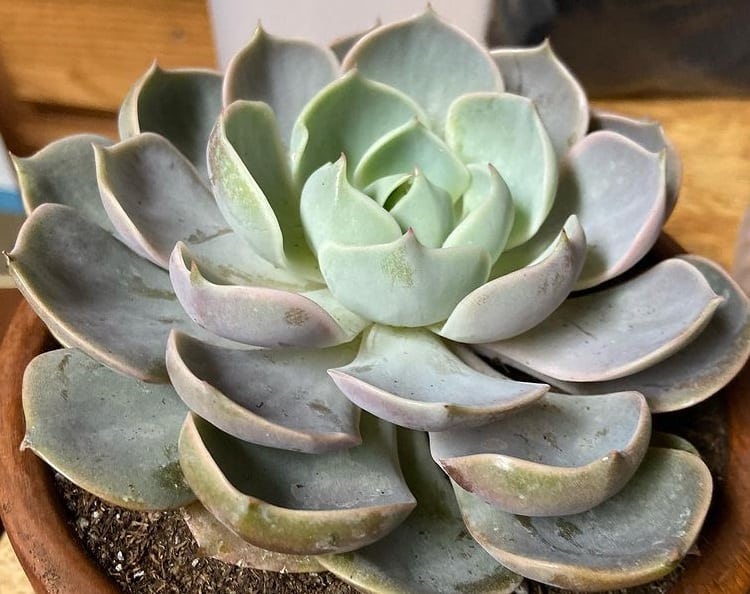Echeveria Lotus 101: Care and Propagation Simplified
Get ready to fall in love with the Echeveria Lotus! This eye-catching succulent will captivate you with its vibrant purple rosettes and fleshy, pointy leaves. While it may look delicate, this tough plant thrives in hot, dry climates and doesn’t need much care. Keep reading to learn all about growing your very own Echeveria Lotus.

Related Post:
160+ Amazing Echeveria Types with Pictures
Contents
About the Echeveria Lotus
The Echeveria Lotus belongs to the Crassulaceae family, along with other popular succulents. Its rosettes grow firmly rooted in the ground, with leaves clustering upwards and thickening towards the middle before tapering into a point at the top. These succulents show off their purple hues best in warm, sunny conditions.
Echeveria Lotus Care Guide
Light
Grow lights can really help this sun-lover indoors. Outdoors, aim for at least 4-5 hours of direct, bright sunlight daily during summer. Too little light causes legginess as the plant “reaches” for its rays. However, scorching sun can also burn the leaves.

Watering
These succulents store water in their plump leaves, so under-watering is better than over-watering which can rot the roots. Only water when the soil is completely dry, then soak it thoroughly until excess drains out the bottom. Avoid letting water pool on the rosette.
Soil
The Lotus succulent needs a well-draining potting mix made for cacti and succulents. Regular potting soil stays too damp. Make sure containers have drainage holes as well.
Temperature and Humidity
This succulent loves warm temps between 65-80°F during spring/summer, and a few degrees cooler in winter. High humidity risks rot, so around 40-50% is ideal.
Fertilizer
Feed sparsely in spring/summer if desired, using a diluted cactus/succulent fertilizer every 2-3 weeks.
Potting and Repotting

Pick pots just slightly bigger than the rootball. Only repot in spring when it outgrows its current home, and let the soil dry out first.
Echeveria Lotus Propagation
Echeveria Lotus can be easily propagated from offsets, leaves, or seeds to grow new plants. Propagating allows you to multiply your collection without buying new succulents.
From Offsets
The easiest way to propagate the Lotus succulent is from the offsets or “pups” that grow from the main rosette. Here are the steps:
- Wait until the offset has grown its own tiny rosette and roots. This ensures it can survive on its own once separated.
- Gently twist the offset side-to-side to detach it from the mother plant. Leave some stem attached if possible.
- Allow the offset to callus over for 2-3 days before replanting in fresh, well-draining soil.
- Water sparingly at first while the new plant establishes roots over the next few weeks.
From Leaf Cuttings
- In spring or early summer, gently twist off a few healthy lower leaves from the main rosette.
- Allow the leaf ends to dry and callus over for 2-3 days.
- Stick the calloused leaf ends vertically into a well-draining potting mix, leaving the top leaf exposed.
- Lightly mist the soil whenever it appears completely dry over the next few months.
- New tiny rosettes will eventually start growing from the leaf bases!
From Seeds
- Sow Echeveria seeds in a seed tray filled with well-draining cactus/succulent soil mix.
- Gently press the seeds into the soil and cover with a thin layer of soil or grit.
- Keep the soil lightly moist and warm until seedlings sprout in a few weeks.
- Once they have a few sets of true leaves, replant the Echeveria seedlings separately.
With patience and the right conditions, propagating Echeveria Lotus lets you multiply your succulent collection for free! Leaf propagation is especially easy.
